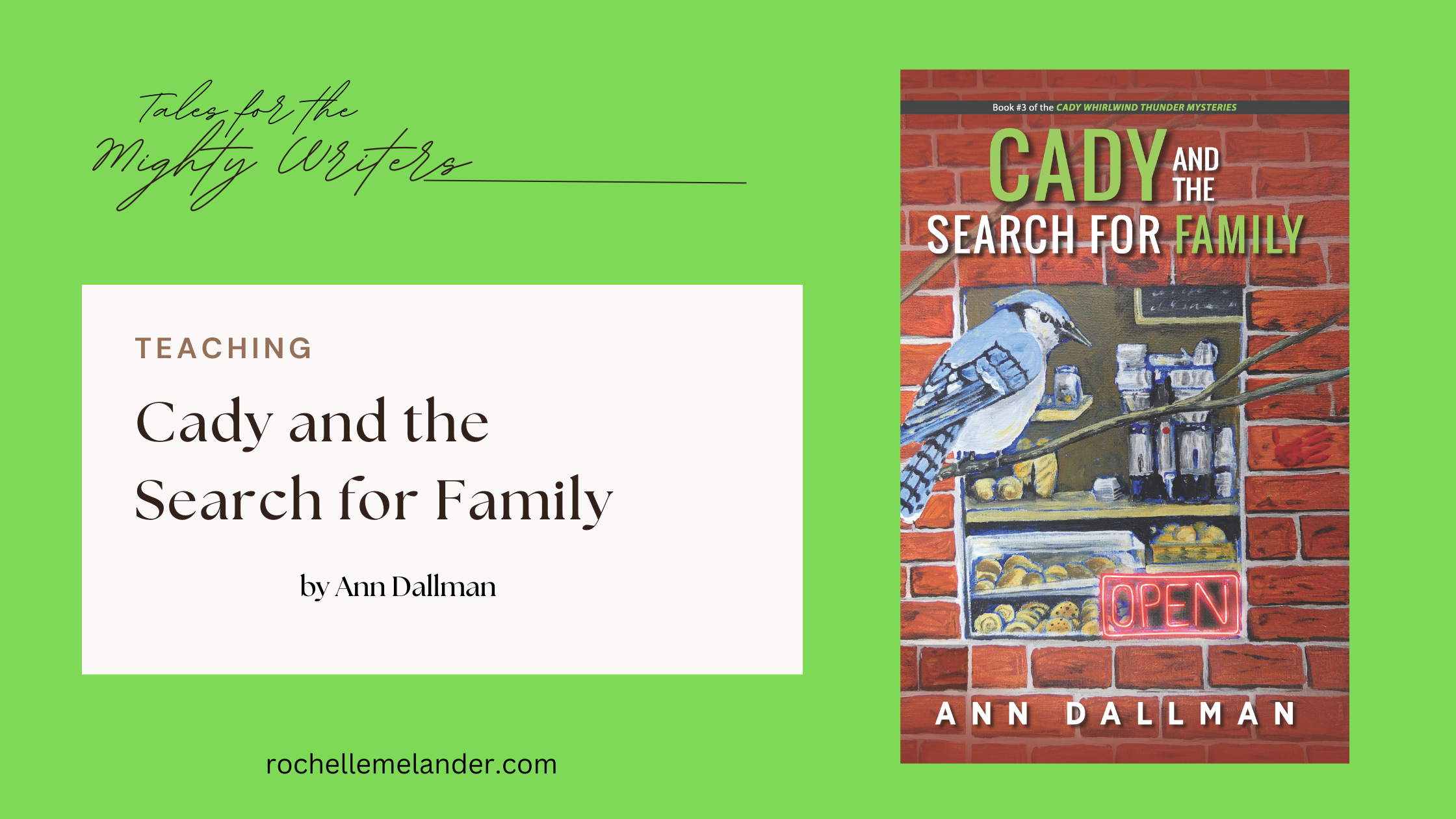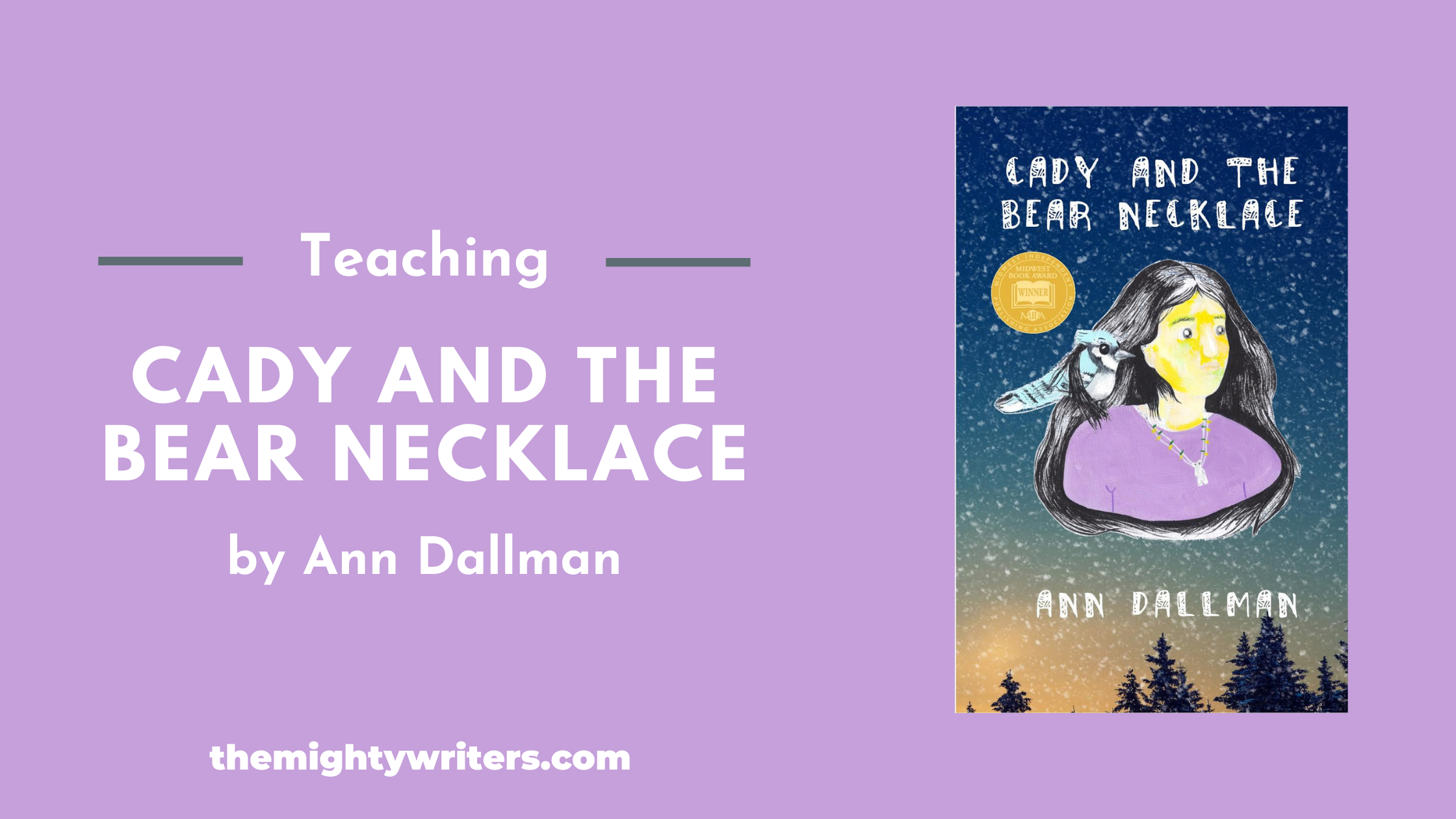A Note to the Reader
Happy fall!
Welcome to the blog. Now more than ever, we need books that support children in learning history. And not just their own. History of all people, from all times, all over the world, can teach us so much about how we can better live our lives today.
Today, I am delighted to welcome Ann Dallman to talk about her new book, Cady and the Search for Family. If you are a teacher wondering how to teach Native American studies, this novel about Native American children might be a perfect fit for you.
Teaching Cady and the Search for Family
Welcome, Ann. Tell us about your new book, Cady and the Search for Family.
I wrote the Cady Whirlwind Thunder mystery series for my students. I wanted to give them a female heroine, someone their age, and from a woodland band of Indians. Hannahville is the Woodland Band of the Potawatomi. They are part of the Three Fires Confederation (Potawatomi, Ojibway and Odawa) and are the Keepers of the Fire. I relied on my former students, colleagues and friends I made in Hannahville to help me.
I wanted a character who, despite facing many issues related to “coming of age,” would make it. I promised my students I’d write a book about them and for them. A major theme of the Cady books is that you can follow your traditions, you can be in your culture and still live in today’s world.
What are some classroom activities teachers can do?
This activity is one I did when teaching at the Hannahville Indian School/Nah Tah Wahsh Public School Academy in Wilson, Michigan and would pair well with the third book in the Cady Whirlwind Thunder mystery series, Cady and the Search for Family. (It is adapted from a lesson in Native Peoples: Indians of the Great Lakes, Michigan Humanities Council 1998.)
Cady and her Grandma Winnie’s road trip throughout Wisconsin and Michigan’s Upper Peninsula trace several sites of importance to native people in each state.
Hand out maps of Wisconsin and Michigan and have students highlight the stops found in the book. They may then research one (or all) of the stops and provide either a written or oral report to the class. Many/most of the place names mentioned in the book come from a native language. As students to research the origin of these names. Maps may be photocopied from an original. I had a relatively small class (12-15 students) and was able to attend actual state maps from area tourist bureaus.
An alternative assignment: Have students work in teams of two. Each team is to plan a road trip that takes them from their home town to each of the stops mentioned in the book. Students are to estimate the driving time, costs involved (meals, snacks, gas, lodging) and total milage of the round trip. They can choose the time of year for their “trip” to include pow wows, etc. Their plans may include traveling by car, train, plane, or water. Students may write a fictional journal of their trip including pertinent details, highlights, things they liked and/or things they’d do differently.
Most of the above follows curriculum framework Standards & Benchmarks in Language Arts and, possibly, Social Studies.
When is a good time to do this lesson?
Consider using this exercise on Indigenous People’s Day, also known as First People’s Day or Native American Day. It’s observed by various states and municipalities in the Americas on the second Monday in October, in lieu of Columbus Day. A day in honor of native indigenous Americans in opposition to the celebration of Columbus Day. The first celebration was on Oct. 11, 1992. (See Wikipedia)
Also many states, including Wisconsin, must include units on native history in their school curriculum.
Are there other books you recommend to go with this lesson?
Night Flying Woman/An Ojibway Narrative by Ignatia Broker
The Birchbark House by Louise Erdrich
Moccasin Thunder by Lori Marie Carlson
About the author
 Ann Dallman has lifelong roots in Michigan’s UP. She started out as a newspaper reporter/photographer and returned to journalism after retiring from teaching. Her first Middle Grade novel, Cady and the Bear Necklace, received a State History Award (Books/Youth) from the Historical Society of Michigan as well as a Midwest Book Award, New Mexico-Arizona Book Award, was a Next Generation Indie Book Award Finalist and a UP Notable Book. Her second book, Cady and the Birchbark Box, also received the Historical Society of Michigan State Award. It, too, is a UP Notable Book. The third book in the series, “Cady and the Search for Family,” was released March 30 of this year.
Ann Dallman has lifelong roots in Michigan’s UP. She started out as a newspaper reporter/photographer and returned to journalism after retiring from teaching. Her first Middle Grade novel, Cady and the Bear Necklace, received a State History Award (Books/Youth) from the Historical Society of Michigan as well as a Midwest Book Award, New Mexico-Arizona Book Award, was a Next Generation Indie Book Award Finalist and a UP Notable Book. Her second book, Cady and the Birchbark Box, also received the Historical Society of Michigan State Award. It, too, is a UP Notable Book. The third book in the series, “Cady and the Search for Family,” was released March 30 of this year.



